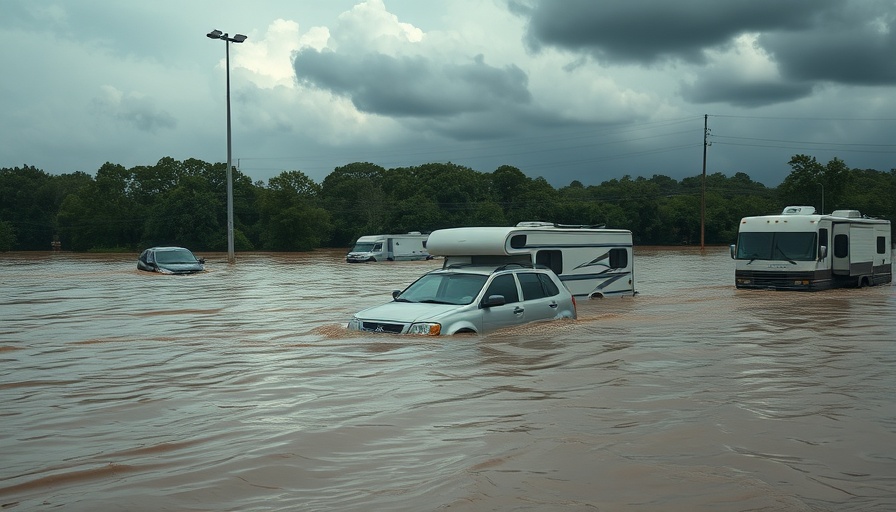
Flash Flooding Forces Evacuations in Comal County
After heavy downpours inundated the area, authorities in Comal County have lifted the evacuation order for River Road along the Guadalupe River. This comes as a relief for residents and visitors who had to vacate their homes amid a flash flood emergency.
Understanding the Impact of Flash Flooding
On July 5, 2025, River Road, located northeast of Gruene, faced significant threats as rain accumulated rapidly, prompting the evacuation notice. Reports from the National Weather Service detailed rainfall amounts of four to six inches in the area, creating hazardous conditions that necessitated immediate action.
The flooding situation was serious enough that officials first issued their evacuation recommendation earlier in the day. “If you live near the river, don’t wait for conditions to worsen,” the Comal County Sheriff's Office urged. Emergency protocols were put in place to safeguard lives, emphasizing the urgency of the situation.
The Response to Emergency Alerts and Public Safety
Emergency responses like these serve as vital reminders of the importance of preparedness in the face of unpredictable weather. Communities are encouraged to stay informed through reliable channels such as local news or government updates. Following the lifting of the evacuation order, residents were warned to remain cautious of lingering hazards despite the cancelation of the flash flood warning.
Authorities also took to social media platforms to communicate essential information, highlighting that real-time updates are crucial in keeping the public safe. Their proactive engagement can be a blueprint for effectively managing communities during crisis situations.
Connections to Larger Weather Trends in Texas
Flash flooding incidents like the one experienced in Comal County are indicative of broader patterns affecting Texas and its weather system. Experts note that increasing climate variability may lead to more frequent and intense weather events, raising questions about future safety measures for vulnerable regions.
This incident serves as a critical juncture for discussions around infrastructure improvements, particularly for areas prone to flooding. Community leaders are now tasked with exploring solutions to mitigate risks while ensuring public safety as weather patterns evolve.
Local Reactions and Community Support
The local community has responded positively to the cessation of the evacuation order, although concerns linger regarding property damage and safety. Community members expressed gratitude for the rapid response from local authorities, which likely saved lives and minimized injury risks among the population.
In these challenging times, the bonds of the community become even more apparent. Residents and local businesses are pulling together, showing resilience in the face of natural disasters. Such solidarity is crucial for recovery efforts and demonstrates the commitment of San Antonio and its neighboring areas to overcome these adversities.
What’s Next for Affected Residents?
For those returning to River Road, the path to normalcy may include clean-up efforts and inspections of properties. Residents should be aware of the potential for damaged infrastructure and seek assistance as necessary, whether from community resources or governmental agencies.
As local and national weather forecasts update, vigilance will remain vital to ensure that residents are prepared for any future incidents of severe weather. This experience can serve as an educational moment for all involved on the importance of preparedness and resilience.
Call to Action: Stay Informed and Prepared
As meteorological events become more unpredictable, it is crucial for communities in San Antonio and beyond to stay informed. Tune into local news updates for continuing information about weather conditions, emergency alerts, and community resources. Understanding the implications of these events and preparing accordingly can help safeguard yourself and your loved ones.
 Add Element
Add Element  Add Row
Add Row 



 Add Row
Add Row  Add
Add 


Write A Comment